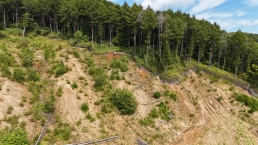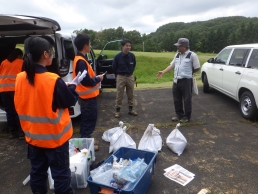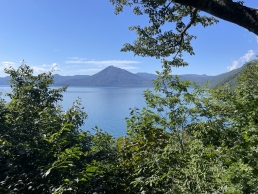Ten days ago, we visit Hokkaido (Atsuma region) for the field survey, where the 2018 Hokkaido earthquake caused slope failures in more than 8,000 locations. Volcanic ash soil (pumice fall) deposited at the site is believed to be the main cause of the slope failure, but the cause of the large flow of gentle gradient slope (10-20 degrees) is still unknown. The Geotechnical Engineering lab. of UTokyo is continuing with basic research together with the slope failure that occurred during the 2016 Kumamoto earthquake (also volcanic ash soil). Six years have passed since the earthquake and there has been considerable progress in reconstruction and slope protection at Atsuma region, but it is still possible to observe and collect the problematic soil at the collapsed slope by excavating the surface soil (1m to 2m). This time, in collaboration with Kyushu Institute of Technology and Kiso-Jiban, we carried out same in-situ tests and collected a large amount of disturbed and undisturbed samples.




